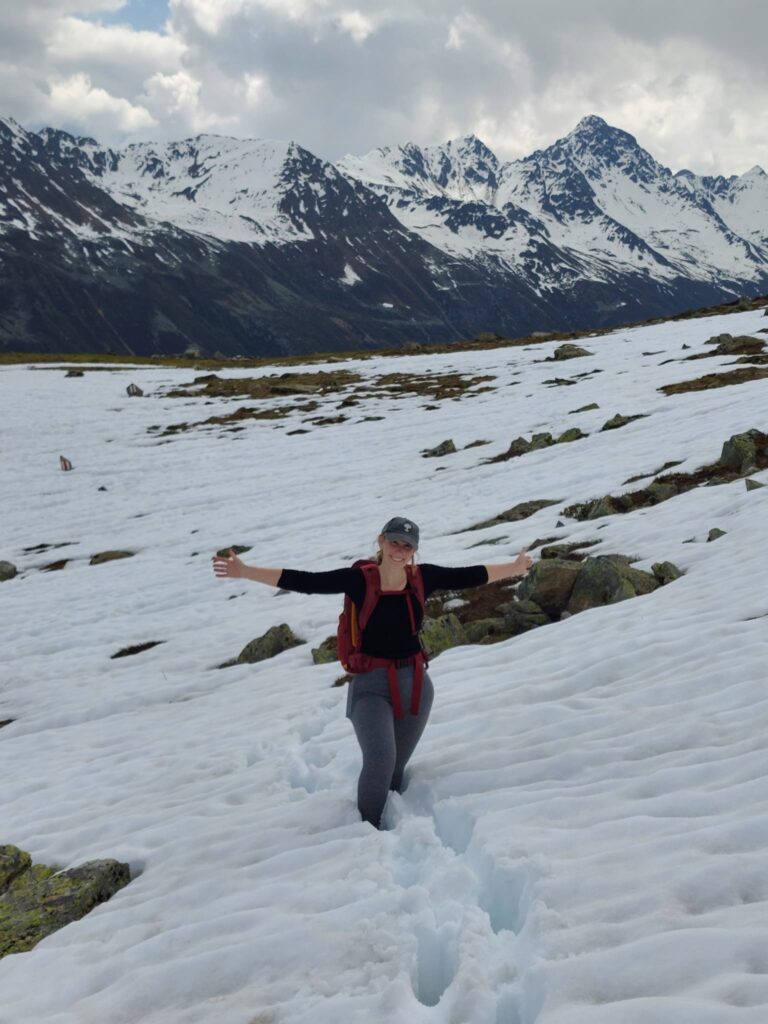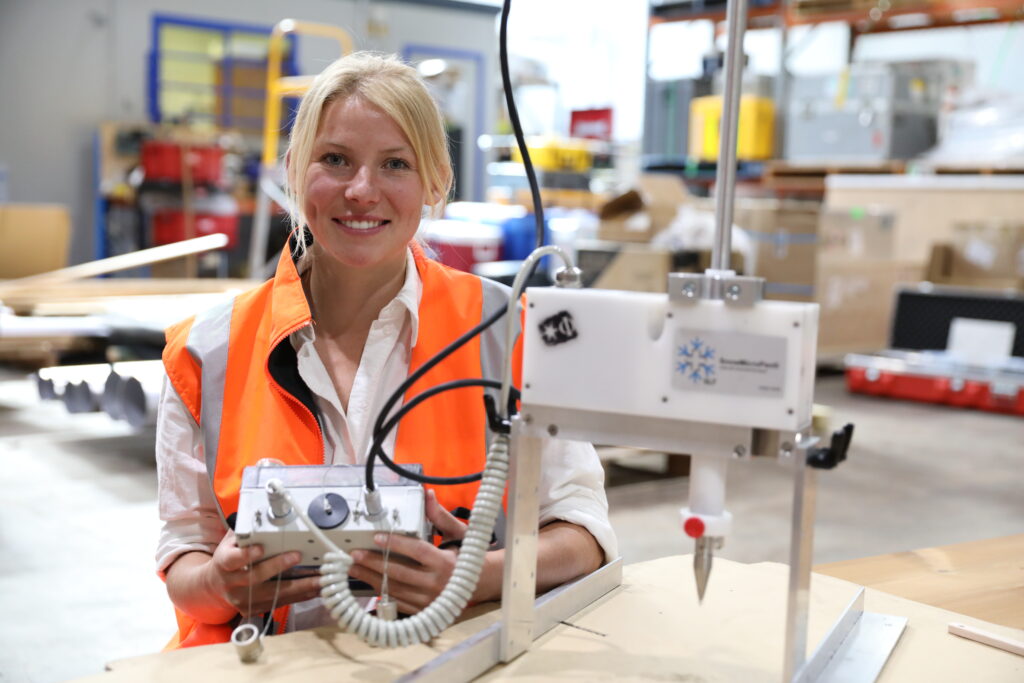Mertz
Fellowship
A programme targeting early-career researchers from the polar and high-altitude science communities in Switzerland and Australia.
Mertz Fellowship
The Mertz Fellowship for polar and high-altitude research is a collaboration between Switzerland and Australia.
The Embassy of Switzerland in Australia, with the support of the Swiss Polar Institute and the Antarctic Science Foundation, offers the Mertz Fellowship to strengthen collaboration between Swiss and Australian higher education and research institutions through scientific networking and joint projects. The programme is aimed at early-career researchers from the polar and high-altitude science communities in both countries.
The 2025-2026 call is now open.
The deadline for submission is the 31st of October 2025, 11PM CET.
See information about the 2025 call
For all inquiries, contact: canberra.scholarships@eda.admin.ch
Hear from past Mertz Fellows

A heat wave in East Antarctica? Sarah’s fieldwork in the Great White Nothingness
Sarah Jackson
Mertz Fellow and climate and environmental physics researcher Sarah Jackson is using ice cores to extend the observational record of Antarctica’s climate.
“When snow falls in Antarctica, changes in environmental conditions, such as temperature or sea ice extent, are preserved in the snow as variations in chemistry. By drilling into the Antarctic ice sheet and collecting ice samples, it’s possible to measure the changes in chemistry and infer what the climate might have been like in the past,” says Sarah, whose dream of Antarctic fieldwork has finally come true.
During a month-long visit, Sarah joined the Denman Terrestrial Campaign, an Australian deep-field research expedition to the Bunger Hills region of East Antarctica. This region is adjacent to the Denman Glacier, one of the deepest and fastest retreating glaciers in East Antarctica. The working conditions in the Great White Nothingness (as she nicknamed the area) were harsh, and setting up the drill took several days due to strong winds and freezing air temperatures. The ice drilling campaign used a new type of drill that collects ice chips rather than a solid ice core.
This allows the drilling to be accomplished with fewer people and a smaller environmental footprint than a traditional ice core camp. “For our project, individual samples of ice chips were collected from the surface to a depth of 200 m, which will be analyzed to determine how the climate has changed over the past 500 years.”
The Mertz grant will support the ongoing analysis of samples from the project. It will allow Sarah Jackson to analyze the samples in Bern, which will help validate the drilling and analytical methods.
The result of this analysis could be world-leading: East Antarctica experienced an extraordinary heat wave in March 2022, resulting in temperature anomalies of 30-40C. Short-lived extreme events can result in clear chemical signals preserved in the ice core record, but an event of this magnitude has not yet been measured directly in ice or snow samples. Thus, the samples will provide further insight into how these events are preserved in the paleoclimate record.
The Mertz Fellowship promotes collaboration and networking between the Swiss and Australian polar and high-altitude research communities. It is open to PhD students and early career researchers from Switzerland and Australia and is supported by the Swiss Polar Institute. Sarah is a postdoctoral researcher at the University of Bern.

Climb every mountain: Melissa’s Swiss summer is bearing fruit
Melissa Gerwin
Mertz Fellow and high-altitude ecologist Melissa Gerwin is monitoring wild blueberry bushes in the Swiss Alps. But it’s not the fruit she’s after.
“I’m monitoring how different plant species respond to a warming climate,” says Melissa. “Alpine plants are very vulnerable to temperature increases, so it’s really important we understand how to target conservation efforts to prevent plant loss.”
Australia has a relative lack of high-altitude areas, limiting local opportunities for Melissa’s field work. Studying extreme high-altitude contexts is also important for her research, requiring travel to alpine countries.
“Swiss high-altitude researchers have a lot of experience I don’t have access to in Australia,” she says.
“There are a lot of alpine ecologists in Switzerland who are mentoring me to become a better high-altitude scientist.”
Melissa is experiencing three summers in a row – in Tasmania, Switzerland, and Tasmania again – to gather her data. The work involves a lot of time on mountain sides.
“We use an open-top chamber that acts like a mini greenhouse to warm up the plants by about 2 degrees Celsius,” Melissa says. “This simulates temperature rise due to climate change, and then we measure impact on plant growth, via characteristics such as leaf size and how plants interact with each other.”
“In Tasmania, we leave the chambers in place all year, but in Switzerland we assemble in summer once the snow clears,” says Melissa, who is hosted in Switzerland by the Swiss Federal Institute for Forest, Snow and Landscape Research (WSL) and its specialised Institute for Snow and Avalanche Research.
Melissa’s work is part of a 9-year global research project with 10 data collection sites, including Switzerland, Tasmania, New Zealand, USA and China. “It’s great to have a global context for this research, and build collaborations for future work together,” Melissa says.
The Mertz Fellowship fosters collaboration and networking between Swiss and Australian polar and high-altitude science communities. It is dedicated to PhD students and early-career researchers based in Switzerland and Australia and is supported by the Swiss Polar Institute. Melissa is a PhD candidate at the University of Tasmania.

A pivotal year in Antarctica sea ice research
Amy Macfarlane
Inaugural Mertz fellow and snow physicist Amy Macfarlane has shifted her focus from the Arctic to Antarctica by setting up new collaborations in Hobart, Tasmania.
Due to its prime location, Tasmania is the perfect location to study Antarctic sea ice as it is often the departure-point for many Antarctic expeditions. Institute for Marine and Antarctic Studies (IMAS) and Australian Antarctic Division (AAD) are leading institutes in sea ice research, and Amy took advantage of setting up collaborations with Antarctic sea ice experts during her time in Tasmania.
“The Arctic ice extent has been in steady decline for the past 30 years; however, this year was pivotal in Antarctica sea ice research as we have experienced a regime shift in sea ice extent signalling towards a breakdown in the link between sea ice and the atmosphere over Antarctica. Working with the researchers at the forefront of these findings was an incredible experience, and I could see the importance of my research in understanding the influence of small and large-scale processes on sea ice.”
The Arctic and Antarctica sea ice experience different snow conditions. Antarctica has a lot more snowfall, meaning the ice often submerges and causes the base of the snow to become flooded.
This contrasts with the seasonal, thinner central Arctic snow cover, which experiences extreme temperature gradients and entirely melts in summer, exposing the sea ice underneath to melt.
Working with Antarctic sea ice experts and combining her Arctic knowledge, Amy had the opportunity to contribute to two chapters in an Elsevier book titled ‘Sea Ice and Ice at the Land Margins’. The two chapters are named ‘snow on sea ice’ and ‘sea ice properties.’
“I compiled and worked on comparing a dataset of snow microstructural properties on sea ice in both the Arctic and Antarctica. This work will initiate future long-term collaborations with researchers looking to download and quickly access snow datasets in both regions. By working with Dr. Petra Heil, I have efficiently accessed and obtained an overview of the datasets available and will continue to add to this dataset overview in the future.”
During this visit, Amy also organised training on snow measurement techniques at AAD for fieldwork in November 2023, conducting snow measurements at Scott Base, Antarctica. During this training, Amy gave an overview of best practices in the field and outlined how to operate the equipment needed to measure the snow conditions.
The Mertz fellowship was perfect timing between Amy finishing her PhD at the WSL Snow and Avalanche Research SLF in Davos, Switzerland and beginning a Swiss-Mobility Postdoc in Norway and the UK. Her focus will be the impact of snow microstructure on sea ice microwave remote sensing to improve monitoring of these regions.
See other programmes on Head Start Swiss.